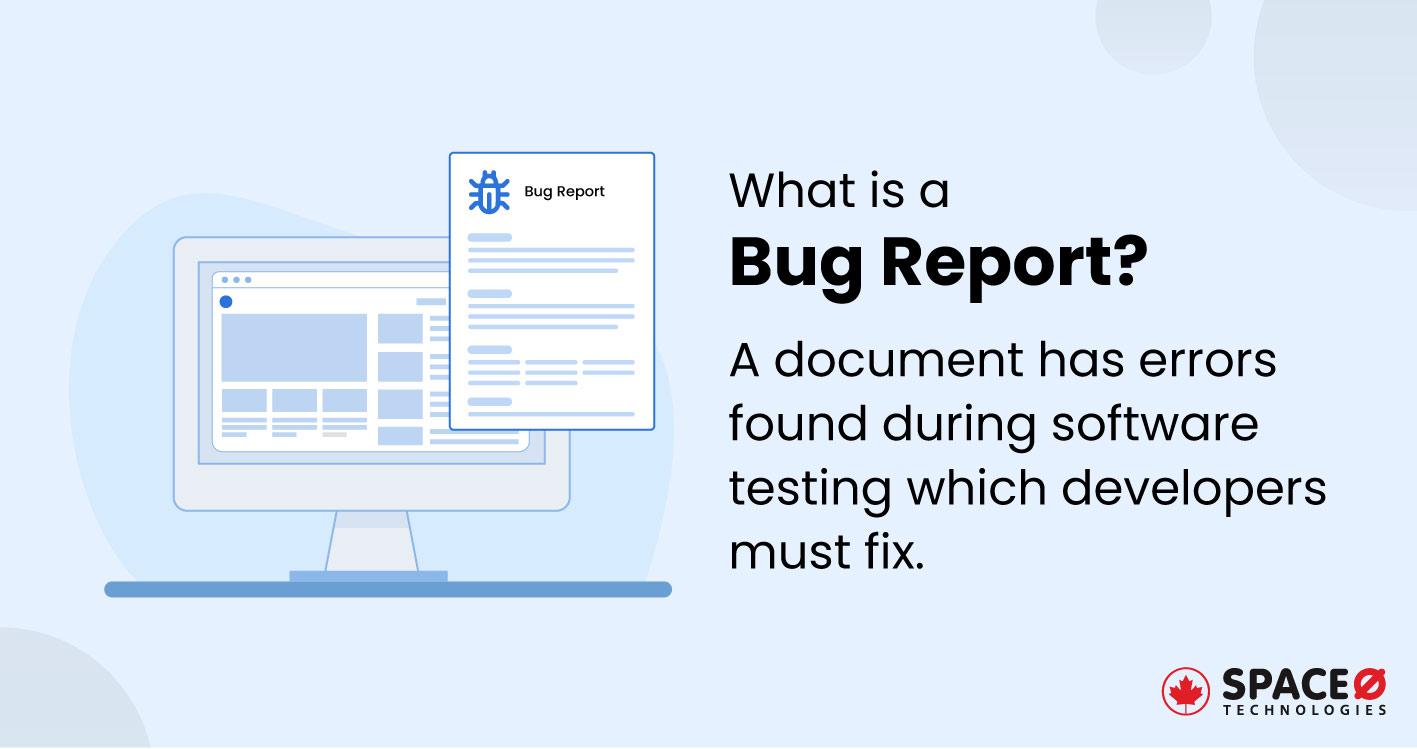
What is a Bug Report? [A Brief Explanation]
Table of Contents
What is a Bug Report?
A bug report is a document that provides detailed information about a software defect or issue faced during software testing or usage of the software.
The purpose of a software bug report is to communicate and document every software issue found during testing or usage. The QA team spends considerable time finding the hidden bugs and also creates a report in a way that is beneficial to developers. By reporting bugs, developers can find and understand the issues quickly.
This way, bug reports serve as a crucial tool for identifying, tracking, and resolving software bugs, ensuring the quality and reliability of the software.
What is the Importance of Bug Reports?
Learn the core reasons why bug reports are important in the software testing life cycle. Bug reporting is important activity that happens mostly during test execution phase but impacts all the subsequent phases. As there are multiple phases in STLC, therefore, at each stage bug reporting helps. To understand in detail, read our comlpete guide on software testing life cycle phases. Here are the reasons that you should know.
- A systematic way to detect and acknowledge software issues or bugs.
- Provides guidance to developers for prioritizing issues that need immediate attention.
- Pinpointing the problems in bug reports saves the time of developers.
- Enhance communication between the development team and end-users.
- Assists in the validation to fix bugs and facilitates regression testing.
Having good and detailed bug reports helps to make the software application stable, secure, and user-friendly by fixing bugs meticulously.
Components of a Bug Reporting
When you are writing a bug report, you need to include the following components. Including these components is a must for writing an effective bug report for the team of developers and engineers. This way, you can create a well-written bug report.
- Title: A descriptive and concise title that summarizes the issue.
Example: “Application crashes when clicking on the ‘Save’ button.” - Description:Detailed description and technical information on the bug, including steps to reproduce it.
Example: “1. Launch the application. 2. Navigate to the ‘Settings’ menu. 3. Click on the ‘Save’ button. 4. Application crashes immediately.” - Expected Behavior: An explanation of what the user or tester expected to happen.
Example: “Upon clicking the ‘Save’ button, the application should save the changes and return to the previous screen.” - Actual Behavior: A description of what occurred or the unexpected outcome.
Example: “Instead of saving the changes, the application abruptly crashes, exits, and shows an error message.” - Environment: Details about the software environment in which the bug occurred, such as the operating system, version, device, browser, etc.
Example: “Operating System: Windows 10, Application Version: 2.1.3, Device: MacBook Pro, Browser: Google Chrome 91.0.4472.124” - Attachments: Screenshots, videos, or any other relevant files that provide visual proof of the bug.
- Priority and Severity: The importance and impact of the bug on the software functionality.
Example: “Priority: High, Severity: Critical – The application crash prevents users from saving their work and may result in data loss.”
Best Practices for Writing a Good Bug Report
When you write a bug report in consideration to improve your software application, here are the best practices that you need to follow to make a perfect bug report.
Write Down Each Step Clear and Detailed Manner
Create a list of steps in a clear and sequential manner required to reproduce the bug. Similarly, as you create test scripts. Read a brief explanation about test scripts to understand the concept well.
Adding the details of each bug helps developers to retrace their steps, recreate the issues, and find the cause of the issues. By following these steps developers can find the same bug and help them to resolve the issues at the root level. That’s why clearly outline the steps to reproduce the bug so that developers can easily understand and recreate the issue.
Provide Specific Information about the Errors
While writing clear information about bugs, you also need to maintain the specific information about bugs occurring. Include specific details, such as error messages, timestamps, or relevant inputs, to help developers identify the cause of the bug.
With such details, developers can find important clues about what went wrong and why. As you write a specific bug description, you help developers to narrow down the potential cause of software failure, which helps to get the problem quickly fixed.
Add Detailed Environments of Software and Hardware
Usually, bugs in a software app occur under certain software or hardware conditions. Therefore, you should provide information about the software and hardware environment in which the bug occurred. This helps developers narrow down the scope of the issue.
Such details may include information about the operating system version, browser type and version, or hardware specifications. As developers get to know these environmental details, it becomes easy for developers to know which certain or specific conditions a bug occurs.
Include Supporting Document Files as a Visual Evidence
You understand the information more accurately if described or explained with images or visual documents compared to plain text, right? Writing text descriptions are helpful, however, including screenshots, a video recording, and images as visual evidence of the bug.
So, whenever possible, attach screenshots, videos, or other files that provide visual evidence of the bug. These can help developers understand the problem more effectively, especially in the case of complex or difficult-to-describe bug situations.
Follow a Consistent Format for Easier Analysis of Information
Follow a consistent format to report bugs within your project using a bug-tracking tool. Having consistency in the document helps to streamline the process of the reporter and the developer.
Also, a consistent format helps to capture and include all the necessary information about your project. This way, you can standardize the information and make an analysis of information easier to address issues as per the bug severity and priority.
In conclusion, a bug report is a crucial document that helps in identifying and resolving software defects. By providing detailed information about the issue, users and testers contribute to improving the quality and reliability of the software. Following best practices when writing bug reports or using a bug-tracking system ensures that developers can understand and address the reported bugs effectively.
Remember, clear and concise bug reports are essential for a smooth and efficient software development process. So, whenever you encounter a bug, make sure to provide all the necessary details to help the developers squash those pesky bugs effectively.
All our projects are secured by NDA
100% Secure. Zero Spam
*All your data will remain strictly confidential.
Trusted by


Bashar Anabtawi
Canada
“I was mostly happy with the high level of experience and professionalism of the various teams that worked on my project. Not only they clearly understood my exact technical requirements but even suggested better ways in doing them. The Communication tools that were used were excellent and easy. And finally and most importantly, the interaction, follow up and support from the top management was great. Space-O not delivered a high quality product but exceeded my expectations! I would definitely hire them again for future jobs!”

Canada Office
2 County Court Blvd., Suite 400,
Brampton, Ontario L6W 3W8
Phone: +1 (437) 488-7337
Email: sales@spaceo.ca




